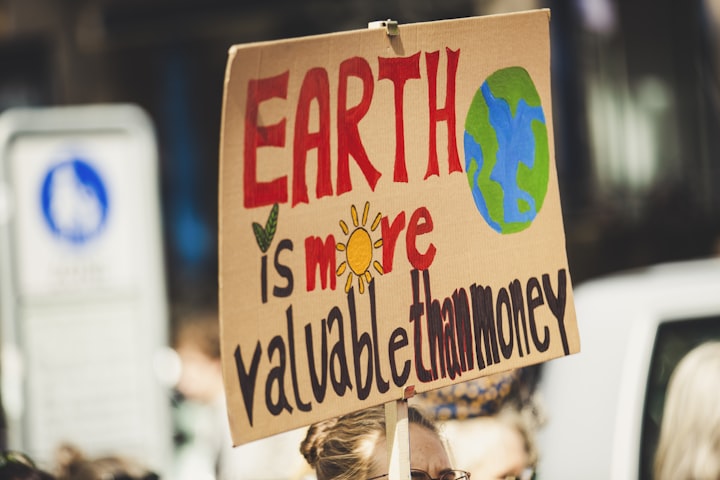Carbon Neutrality 102: Credits, Offsets and How Capitalism Hijacked Climate Action
Companies going carbon neutral sounds great in theory and is surely helping us fight climate change but what if I told you that we are ignoring a more effective path and choosing the other, just because it is more convenient and suits the rich better?

BP, Shell, Total, Repsol, and Equinor are 5 of the major oil companies of the world that have promised to go carbon neutral by the year 2050. If you do not understand what carbon neutrality means, I’d suggest you read this article before you read any further.
Now, one might wonder how an oil company can ever go carbon neutral. I mean they literally sell oil that emits carbon right? Even if we ignore the emissions caused by their end products, the process of oil production is itself a major contributor to atmospheric greenhouse gas emissions. So how exactly do companies make up for these inevitable emissions before they go on to achieve the ‘net zero’?
Well, the answer lies right there. ‘Net Zero’ does not necessarily require a business to cut down its own carbon emissions to zero. If the company can take back an amount of carbon from the atmosphere, that is equal to the amount it emits, the business can still achieve carbon neutrality. Simple math right?
Now, this is where it starts to get complex. To take back your carbon from the atmosphere, you need to pay someone else to do it. There are several ways to take back carbon from the atmosphere which include techniques ranging from carbon sequestration using forestry to direct capture of carbon dioxide from the air. Some of these technologies are more expensive than others and companies would naturally go for the least expensive ones. So what they do is go to the market, the carbon credit market!
Carbon credit markets have been around for a few decades now. Some of them are compliance markets, set up in regions where environmental norms are stricter, while the others are voluntary. Compliance markets make it mandatory for certain companies to participate in their carbon trading schemes to cut down the region’s emissions. Some of the biggest compliance markets include the European Union Emissions Trading System (EU -ETS) and the California Carbon Cap and Trade Programme. Essentially, if you were to open a cement factory in the EU, the regulations would require you to set up a limit on your carbon emissions. If you wish to emit more, you would have to purchase carbon credits. If you emit less, you can sell your credits for cash. Voluntary markets, on the other hand, are well, absolutely voluntary. They work similarly as the compliance markets do, except that the cap on carbon emissions is voluntarily decided instead of being assigned by a regulatory body.
Now the question is where exactly does all this money from the offsets go? As stated previously, the money goes into the elimination of greenhouse gases from the atmosphere. The money funds projects such as forest land preservation in the Amazon, peatland restoration in Indonesia, setting up a renewable energy-based plants in under-developed countries, direct air capture of gases such as methane and carbon dioxide, etc. These offsets are not only effective but are also convenient for companies that can now claim to be carbon neutral without having to cut down on their own emissions. They also help develop cleantech infrastructure. More importantly, these offsets bring the much-needed capital into restoration and preservation programs thereby helping indigenous communities (at least in theory).
If it sounds all hunky-dory so far, well here's the catch. For starters, several carbon offset programs are not effective enough to deal with the sheer volume of carbon dioxide that exists in the air right now. Planting trees may sound like a good idea and it sure is (mostly) but there's only so much volume of gas that trees can sequester. Recklessly planting non-native trees can also lead to air quality degradation and ecosystem changes that are hard to predict. Moreover, forests can also catch forest fires which essentially means that all the sequestered carbon has now gone back into the atmosphere. Furthermore, a majority of forestland and peatland conservation projects happen in the global south where countries are already resource-constrained. Agricultural land has to compete with forests and this, in turn, affects their industrial growth and long-term economy. It's almost as if the richer countries get a free hand to pollute and grow their industries the way they always have, by paying money to the poorer countries to clean up their dirt. Several offsets are not even effective and only serve as a tool for greenwashing. For example, if you fund a wind farm to offset your carbon, in a region that is planning to shift to renewable energy either way, in effect, you have not eliminated any additional amount of carbon from the atmosphere.
While most companies purchase offsets only when they’ve exhausted their in-house carbon abatement potential, several industries that are inherently polluting, simply purchase offsets to cover up for the mess they create. Oil companies continue to explore newer regions to drill oil and bring more fossil fuels above the earth's surface and yet commit to carbon neutrality through the purchase of offsets. It's as stupid as someone pouring equal amounts of diesel and water into a fire, in an effort to put the fire out!
The debate around carbon offsets is a long and a complex one and it surely has its own advantages are disadvantages. Its better than not taking any action whatsoever but on the comparative, it's also slow and inefficicent and can have significant geopolitical and socio-economic consequences for the future. I guess, only time will tell?
If you've reached this far, I truly appreciate your time. Through this blog, I plan on writing about sustainability, social impact, climate change, and how actors, ranging from governments to markets to individuals, are changing their ways to make the world a better place. Since I'm still learning, I'd love to receive feedback on my work. Check out my bio for my instagram and linkedin. Stay safe!
About the Creator
Rishi Rathi
Musing over sustainability and impact and ways to make the world better than we inherited. I'm learning while I write and I want your opinions on my stories.
Instagram - rishirathi_






Comments
There are no comments for this story
Be the first to respond and start the conversation.